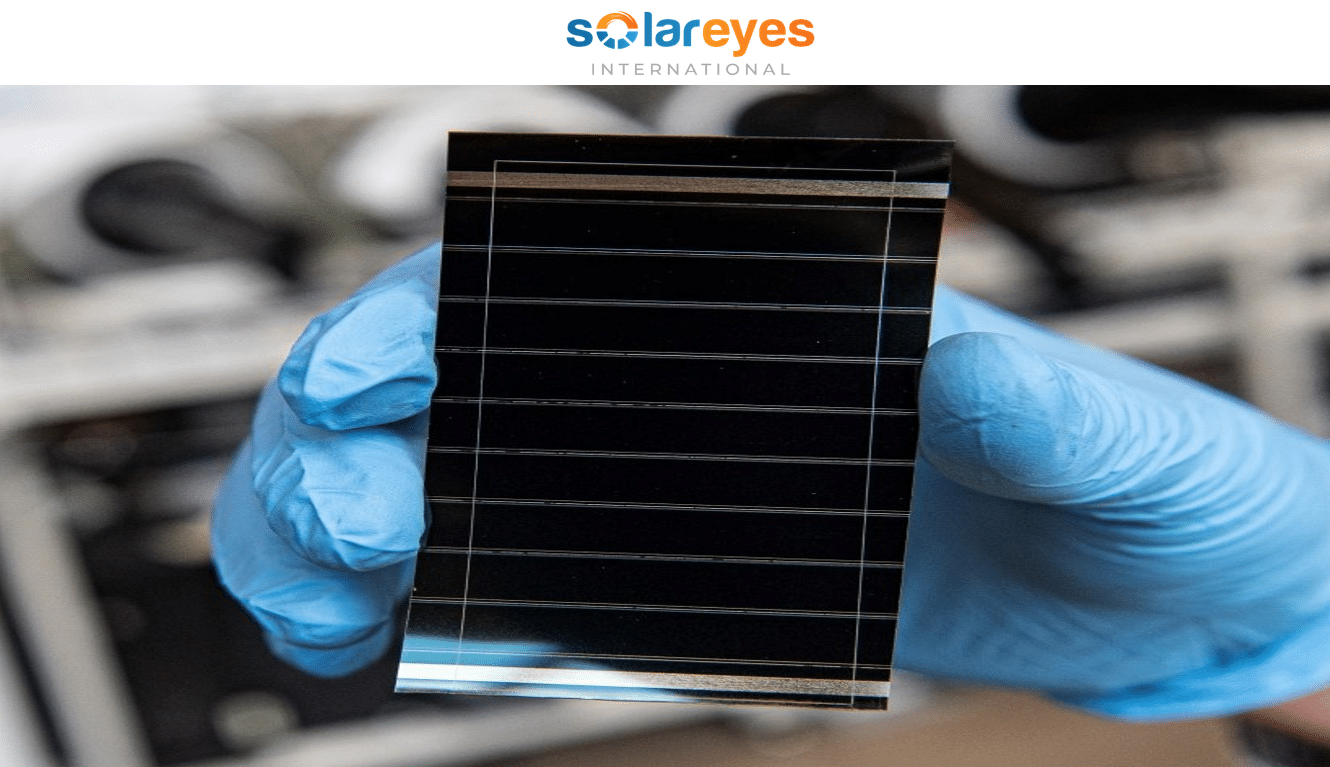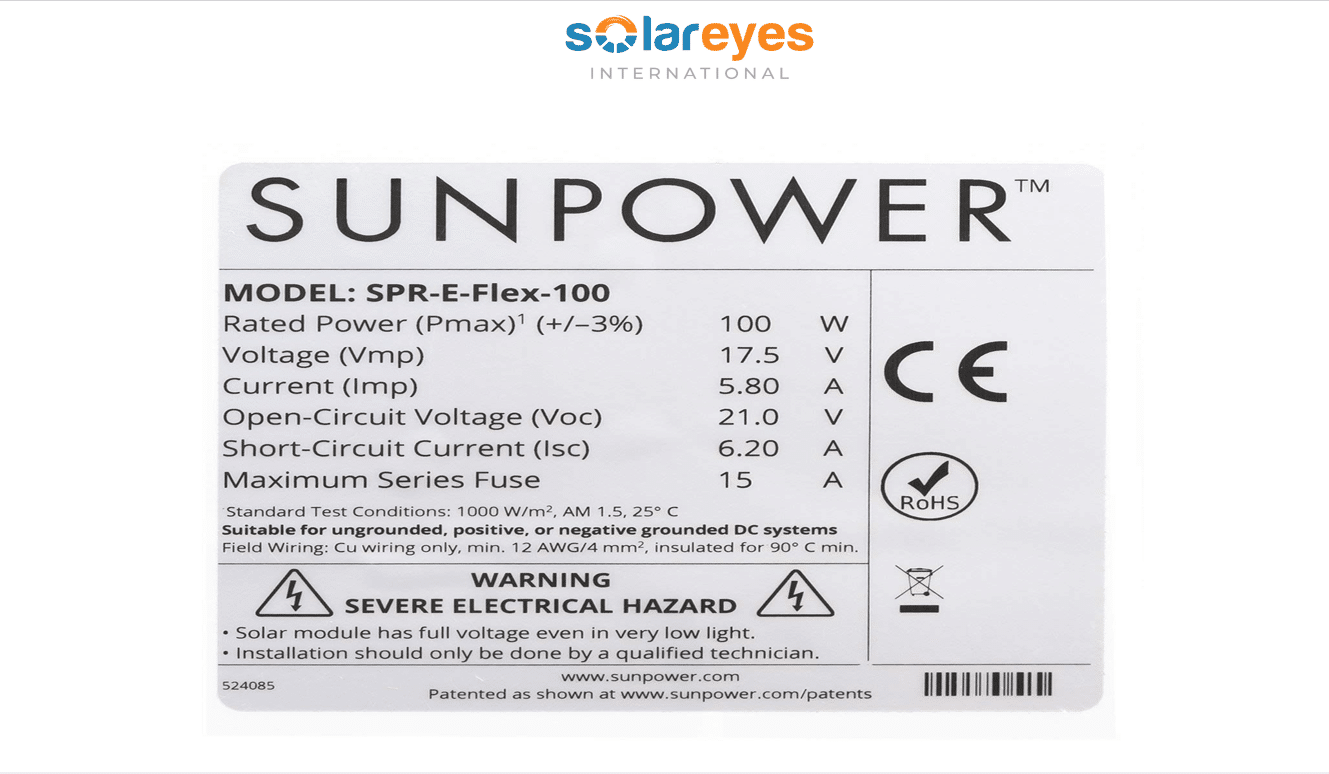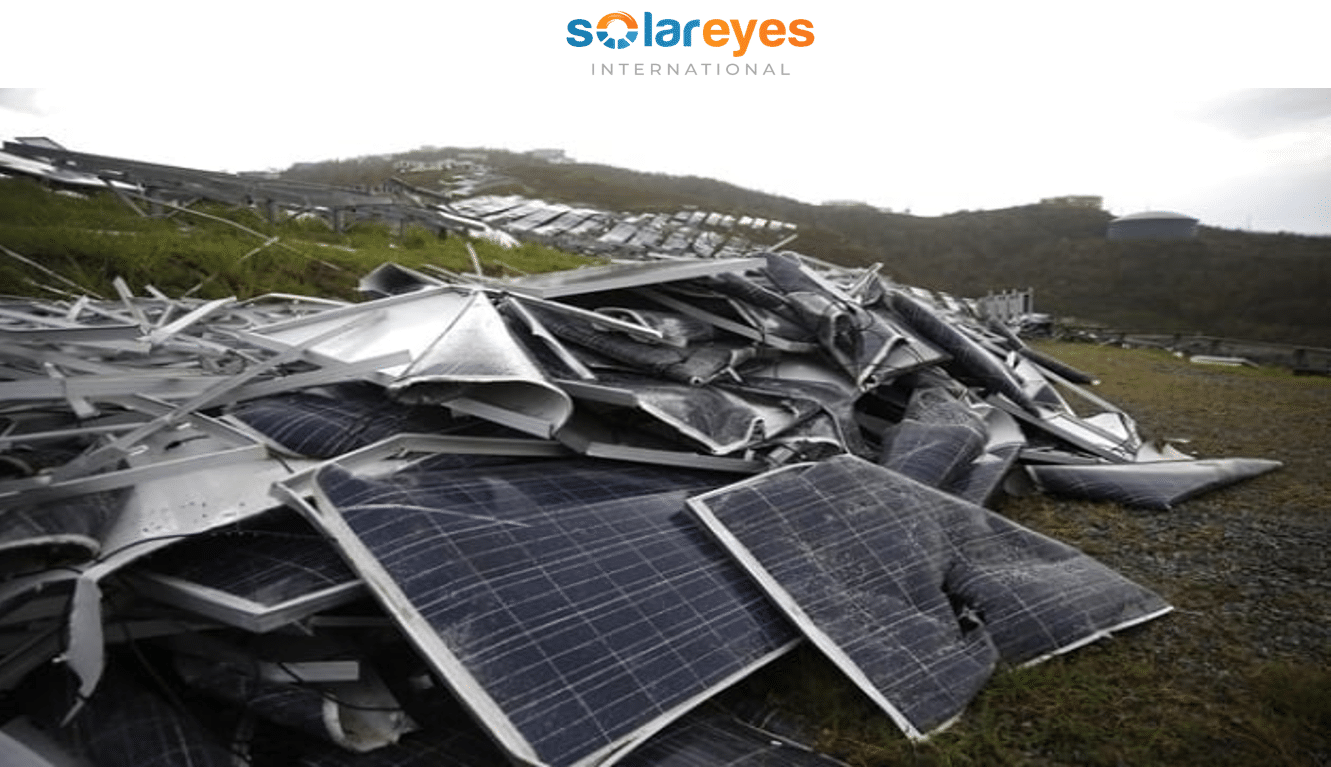Perovskite solar-cells: Revolutionizing the future of solar technology

Introduction: Perovskite solar-cells
In the quest for sustainable energy and combating climate change, researchers have turned their attention to perovskite solar cells. These innovative cells, based on a crystal structure discovered in the 19th century, hold the potential to revolutionize the efficiency and cost-effectiveness of solar technology.
All photovoltaic solar cells rely on semiconductors (materials with characteristics between electrical insulators such as glass and metallic conductors such as copper) to convert light energy into electricity. Sunlight excites electrons in the semiconducting material, which flow into the conducting electrode and produce an electric current. Silicon as one of the most important semiconductor materials for solar cells since the 1950s match well with the spectrum of sunlight and it is relatively abundant and stable.
However, the large silicon crystals used in conventional solar panels require expensive, energy-intensive multi-step manufacturing processes. Seeking an alternative, scientists have exploited the tunability of perovskite to create semiconductors with properties similar to silicon. Perovskite solar cells can be manufactured at a fraction of the cost and energy using simple additive deposition techniques such as printing. The flexible composition of perovskites also allows them to be optimally tuned to the solar spectrum.
Perovskite solar-cells – Discovery and Journey to date
In 2012, researchers discovered for the first time how to use lead halide perovskite as a light-absorbing layer to fabricate stable thin-film perovskite solar cells with >10% electron conversion efficiency from light to photons. Since then, the efficiency of perovskite solar cells in converting sunlight into electrical energy has improved dramatically, reaching a laboratory record of 25.2%. Researchers are also combining perovskite solar cells with conventional silicon solar cells. This rapid increase in cell efficiency makes perovskite and tandem perovskite solar cells potentially a low-cost, high-efficiency alternative to conventional silicon solar cells.
Best Solar Cell Efficiency Chart – National Renewable Energy Laboratory(NREL)
Perovskite solar cells, including perovskite-on-silicon tandems, have been commercialized by dozens of companies worldwide, but fundamental scientific and engineering challenges exist to improve their performance, reliability and manufacturability. is still not resolved. Some perovskite researchers continue to improve conversion efficiency by characterizing perovskite defects. Although perovskite semiconductors are highly fault tolerant, defects, especially those occurring at the surface of the active layer, still adversely affect performance.
Other researchers are investigating new perovskite chemical formulations to tailor the electronic properties for specific applications (such as tandem cell stacks) or to further improve stability and lifetime. Some companies are rapidly researching various manufacturing processes, including how to adapt perovskite ‘inks’ to established large-scale solution printing processes. Today’s most powerful perovskites are made with small amounts of lead, but researchers are also exploring alternative compositions and new encapsulation strategies to address concerns about lead toxicity.
Perovskite-based materials offer several advantages over conventional solar panels. One key advantage lies in their higher absorption coefficient, enabling them to capture a broader range of photon energies from the sunlight spectrum. Moreover, perovskite cells exhibit great potential when combined with silicon in tandem solar cells. These tandem configurations can reach efficiencies of up to 31.25%, significantly surpassing the limitations of single-junction silicon cells. This breakthrough opens doors to harnessing even more energy from sunlight, making solar power an even more viable and efficient renewable energy source.
Beyond their superior performance, perovskite cells offer sustainability benefits and cost advantages. Traditional silicon-based solar panels require intense heat and energy during production, leading to higher carbon emissions. In contrast, perovskite cells are thin, less than 1 micrometer thick, and can be painted or sprayed onto surfaces, making them cheaper and more environmentally friendly to manufacture. In terms of cost, perovskite cells have the potential to significantly reduce the price of solar energy.
SOLAR NEWS: The Largest Floating Solar Farm in North America Comes Online
A Stanford University analysis estimated that perovskite modules could be produced for as low as 25 cents per square foot, compared to the approximate $2.50 cost for silicon equivalents. This cost reduction makes solar energy more accessible and paves the way for widespread adoption across various sectors.
The potential of perovskite solar cells has not gone unnoticed by the industry. Companies around the world are investing in research and development to commercialize perovskite panels. For example, CubicPV, backed by Bill Gates’ Breakthrough Energy Ventures, is developing tandem modules with an efficiency target of 30%. Oxford PV, a spinoff from Oxford University, is working on tandems with efficiencies reaching 37%. These efforts showcase the growing confidence in perovskite technology and its ability to disrupt the solar industry.
Current Challenges of Perovskite solar-cells
Despite the remarkable progress, challenges remain on the path to widespread adoption of perovskite solar cells. These challenges include addressing issues related to cost-effectiveness, durability, and environmental impact. Researchers are actively working on developing alternative compositions that eliminate the need for lead, ensuring the safety and sustainability of perovskite materials.
While more extensive field testing is needed to evaluate long-term stability, recent studies have shown promising results. Field trials have demonstrated that tandem cells can retain over 80% of their initial conversion efficiency after a year, providing optimism for their commercial viability. Researchers and industry experts remain optimistic that perovskite-based power generation will become a major player in the solar cell market in the next decade.
Conclusion
Perovskite solar cells hold tremendous promise in revolutionizing the future of solar technology. Their ability to surpass the efficiency of traditional silicon-based panels, coupled with their sustainability and cost advantages, positions them as a game-changer in the renewable energy sector. As research and development efforts continue, and challenges are overcome, perovskite solar cells are poised to contribute significantly to a self-sufficient and sustainable society. With their potential applications in various fields and the growing interest from industry players, it is clear that perovskite solar cells are set to transform the way we harness and utilize solar energy.
**************************************************************************
This article was written by Shqipe Asani who is a SolarEyes Contributor. More information about SolarEyes Contributors can be found on this link: https://solareyesinternational.com/solareyes-international-contributors/
*************************************************************************
FOLLOW US ON SOCIAL MEDIA
Follow us on LINKEDIN, FACEBOOK, TELEGRAM GROUP and WHATSAPP.
*** ALSO CHECK: HOW TO SIZE A SOLAR SYSTEM – 5 clear steps anyone can follow
HOW TO START A SOLAR COMPANY – do these 6 things and make money through solar
How to Identify Fake Solar Products
SOLAR PANEL LOSSES: All you Need to Know + Tips on how to avoid them
SOLAR PV MODULE MANUFACTURING PROCESS EXPLAINED – from solar cells to solar panel
10 Surprising Ways Solar Energy Can Save You Money Today!
Opportunities for Solar Energy Development in Europe
FREE TOOLS to use for Solar Panel Tilt Angle Calculation and Installation – for any location
How Solar Panels Can Increase Your Home Value
HOW TO IDENTIFY FAKE SOLAR PRODUCTS – 6 things to check
Some Examples of where People have Fallen Victim to Fake Solar Products
How to Choose Solar Panel Brands
Top 10 Solar Panel Companies Driving the Renewable Energy Revolution
Best Solar Cell Efficiency Chart – National Renewable Energy Laboratory(NREL)






